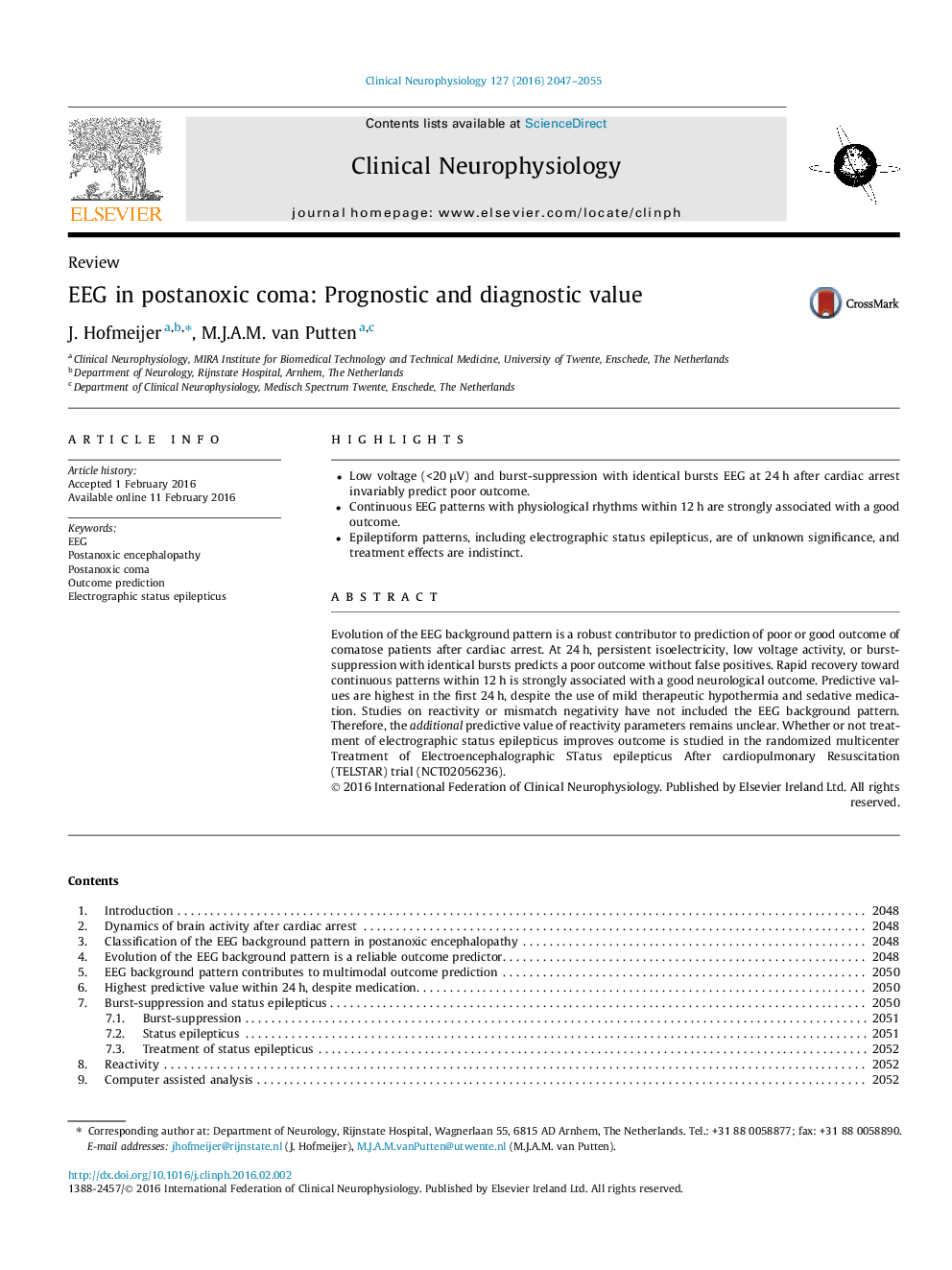| Article ID | Journal | Published Year | Pages | File Type |
|---|---|---|---|---|
| 6008137 | Clinical Neurophysiology | 2016 | 9 Pages |
â¢Low voltage (<20 μV) and burst-suppression with identical bursts EEG at 24 h after cardiac arrest invariably predict poor outcome.â¢Continuous EEG patterns with physiological rhythms within 12 h are strongly associated with a good outcome.â¢Epileptiform patterns, including electrographic status epilepticus, are of unknown significance, and treatment effects are indistinct.
Evolution of the EEG background pattern is a robust contributor to prediction of poor or good outcome of comatose patients after cardiac arrest. At 24Â h, persistent isoelectricity, low voltage activity, or burst-suppression with identical bursts predicts a poor outcome without false positives. Rapid recovery toward continuous patterns within 12Â h is strongly associated with a good neurological outcome. Predictive values are highest in the first 24Â h, despite the use of mild therapeutic hypothermia and sedative medication. Studies on reactivity or mismatch negativity have not included the EEG background pattern. Therefore, the additional predictive value of reactivity parameters remains unclear. Whether or not treatment of electrographic status epilepticus improves outcome is studied in the randomized multicenter Treatment of Electroencephalographic STatus epilepticus After cardiopulmonary Resuscitation (TELSTAR) trial (NCT02056236).
